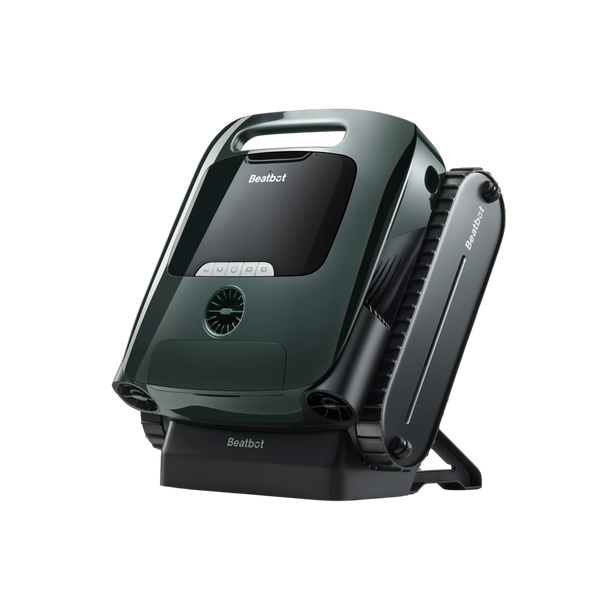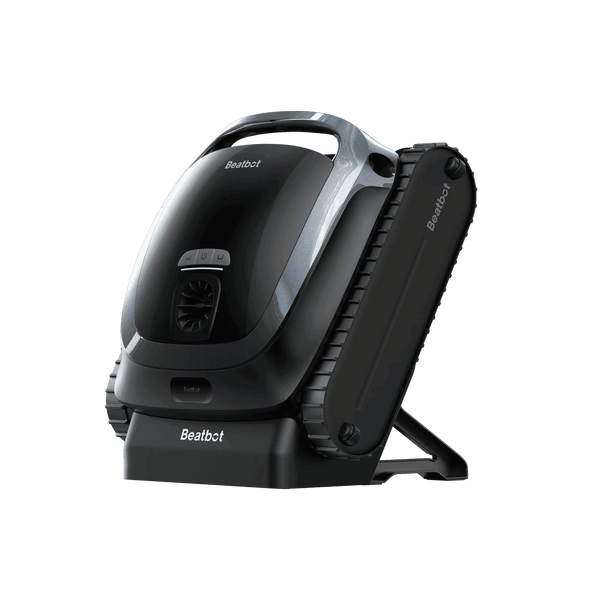When to Replace Pool Filter Sand for Optimal Performance
The filter is to a pool what the kidney is to the human body. But have you ever wondered when it's time to change the sand in your filter? If this question has crossed your mind, you're not alone; it's a common concern for many when discussing pool maintenance.
Table of content

Types of Filters, the First You Need to Know
Sand Filters:
Water passes into a multiport valve and then down through a deep bed of filter sand that captures small impurities before the cleaned water is returned to the pool.
Advantages:
Aside from the occasional (once or twice a season) backwashing, very little maintenance is needed, and sand only has to be replaced approximately every five years.
Disadvantages:
Sand filters are the least efficient of the three filter types, and they do not filter out small contaminants very well.
DE Filters:
A fine, white powder called diatomaceous earth and a series of filter grids—or fingers. Water runs through these grids, which are coated on the outside with D.E. powder, where it gets filtered and then sent back to the pool.
Pros:
DE filters are extremely effective, and able to filter out smaller contaminants than any other type of filter.
Cons:
The most maintenance intensive. Like every filter, the D.E. powder has to be replaced every time the filter is backwashed and the grids or fingers will need to be washed down at the end or start of each pool season.
Cartridge Filters
A cartridge filters has one or more large round filter cartridges housed in a tank. They are similar to air filters in an automobile, or cartridge filters in a spa. Water is pressurized through the filter mesh and pumped back to the swimming pool.
Pros:
With good maintenance, cartridge filters are better than sand filters at removing contaminants.
Drawbacks:
They require a some hands-on upkeep – if you have a cartridge that, say, clogs up, you'll have to replace the cartridge every so often. The cartridges must often be removed and rinsed out with a hose. Additionally, they need to be soaked in filter cleaning solution or replaced entirely once a year, at the beginning or end of each year.

What Happens With a Bad Filtration System
The main cause of clouding in the swimming pool water is related to problems with filtration. The removal of these microscopic particulates causes the water to cloud up if the filter is not working correctly. Here are the common problems which are faced in filtration:
- Pool Filter Clogs or Buildup: if the filter has not been cleaned in a while, backwash the sand or D. E. filter, clean the D. E. filter grids, or clean the cartridge in the filter.
- Skimmer Basket or Pump Basket Full of Debris: Empty skimmer or pump basket of leaves, twigs, or other debris.
- Pool Filter Media Requires Replacement: A worn-out or damaged filter media cannot capture the contaminants that cause cloudy water. Thus, change the filter sand after 5 years, change cartridge filters after 2-3 years, and for a D.E. filter, add new diatomaceous earth powder or replace the D.E. grids.
- Low Filter Run Time: If all of your pool water is not filtered at least once daily, then it will be impossible to clear a cloudy pool. This results in you having to keep your filter system on for a minimum of 8 — 12 hours every day.
- Replacing Pool Pump or Filter: Your pool filter system can begin to fail as it gets older, and you will have to replace major equipment.
What Exactly is Pool Sand?
Pool sand isn't your everyday sandbox material; it's a carefully calibrated type of silica sand engineered for the sole purpose of filtering out the unwanted stuff from your pool water. It's all about letting the water pass through while catching dirt, debris, and any other yucky contaminants that don't belong in your pool. Typically, you'll find that the ideal grain size for pool filter sand hovers around 0.45 to 0.55 millimeters. This sweet spot ensures that the sand is doing its job of filtering without putting the brakes on the water flow.
The Unsung Hero of Pool Maintenance: Filter Sand
Filter sand is more than just a granular substance; it's a tiny trap that snares everything from algae and leaves to the tiniest of insects, keeping them from spoiling your pool party. Here's how it works:
- Catching the Culprits: It's like a microscopic security guard, capturing all sorts of unwanted guests and preventing them from taking a dip in your pool.
- Preserving Crystal Clarity: The state of your filter sand directly affects the sparkle in your pool water. When it's clean, your water shines bright, making for a delightful swim, or, the water flowing through it would carry impurities back into the pool, causing new contamination.
- Enhancing Water Flow: When in good condition, the sand filter can ensure pool water moving freely through the pool's filtration. With an efficient water circulation, your pool can be kept clean and welcoming.
In a nutshell, filter sand is your pool's best defense against dirt and grime. But when it gets clogged or worn down, it can't do its job as well, which might lead to water that's not quite up to snuff.So, how do you know when it's time for a sand swap? The answer lies in the signs that your filter sand is past its prime.
The Telltale Signs It's Time to Refresh Your Pool Filter Sand
Spotting the perfect moment to change your pool filter sand is key to keeping your pool water in tip-top shape. Here are the subtle cues that it's time to bring in fresh sand:
- The Pressure's Building: Give your filter's pressure gauge a quick glance. If the numbers are climbing higher than normal, it's a red flag. A gauge that's consistently above 8-10 PSI often means your sand is clogged, slowing down water flow and tripping up the filtration process. Keep an eye on that gauge; a jump in pressure is a sure sign that your sand needs a refresh.
- A Murky Swim: If your pool's once-clear waters are now a bit cloudy or murky, it's a sign that your filter sand isn't catching contaminants like it used to. The sand might be maxed out, packed with dirt and debris. Your pool water should always be clear and inviting; if it's not, it's time to take a closer look at the filter and consider a sand change.
Be careful to these symptoms can help you keep your pool filter in peak condition, which ensures a clean, clear pool ecosystem.
Frequency of Sand Replacement
You need to change the pool filter sand every three to five years. If you notice that the water is dirtier than usual and the sand is clumped together or feels greasy, it's time to change the sand.When changing the sand, be sure to inspect your laterals. Laterals are the bars of the star-shaped section at the bottom of the sand filter. Over time, regular wear and tear and pressure from the sand may cause them to break. If you have a broken lateral, the efficiency of your filter will suffer.
Relative Blogs
About the author



















